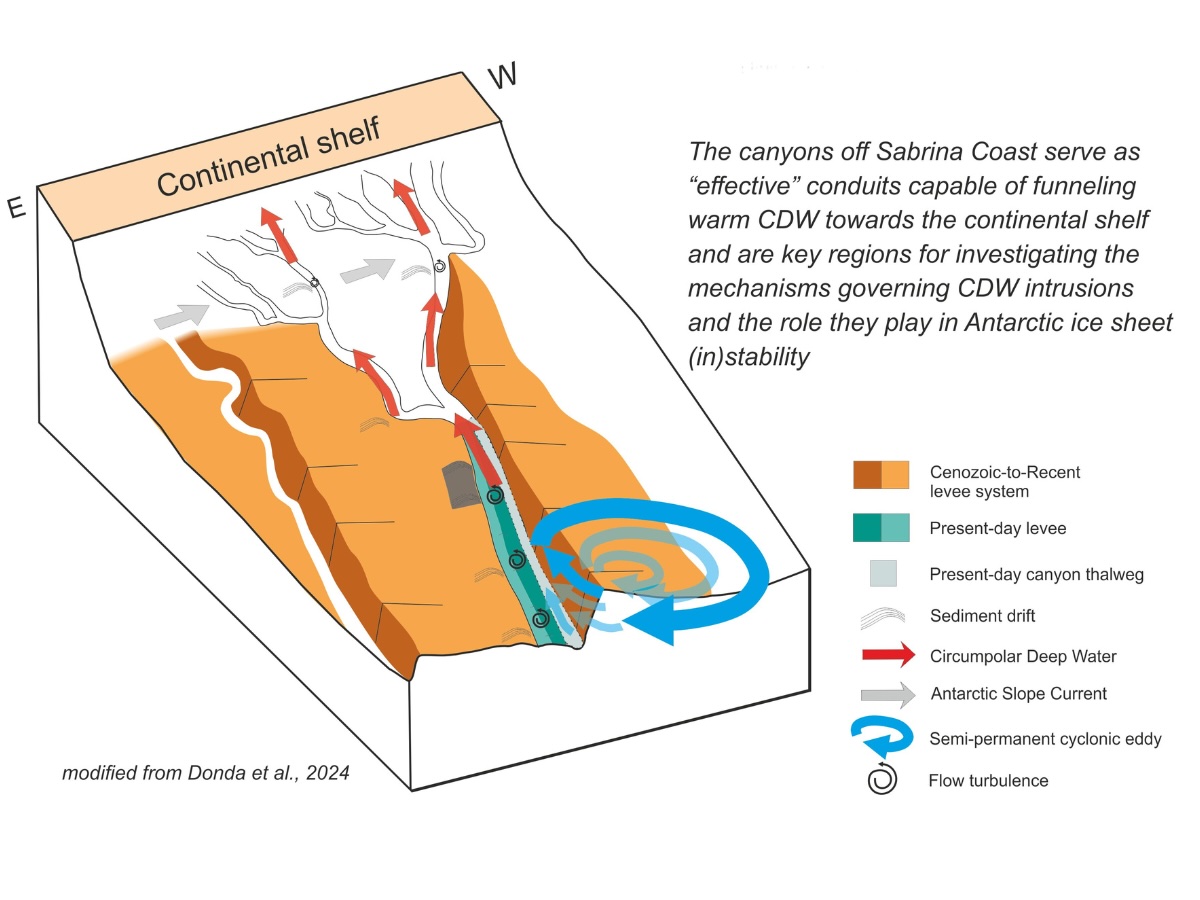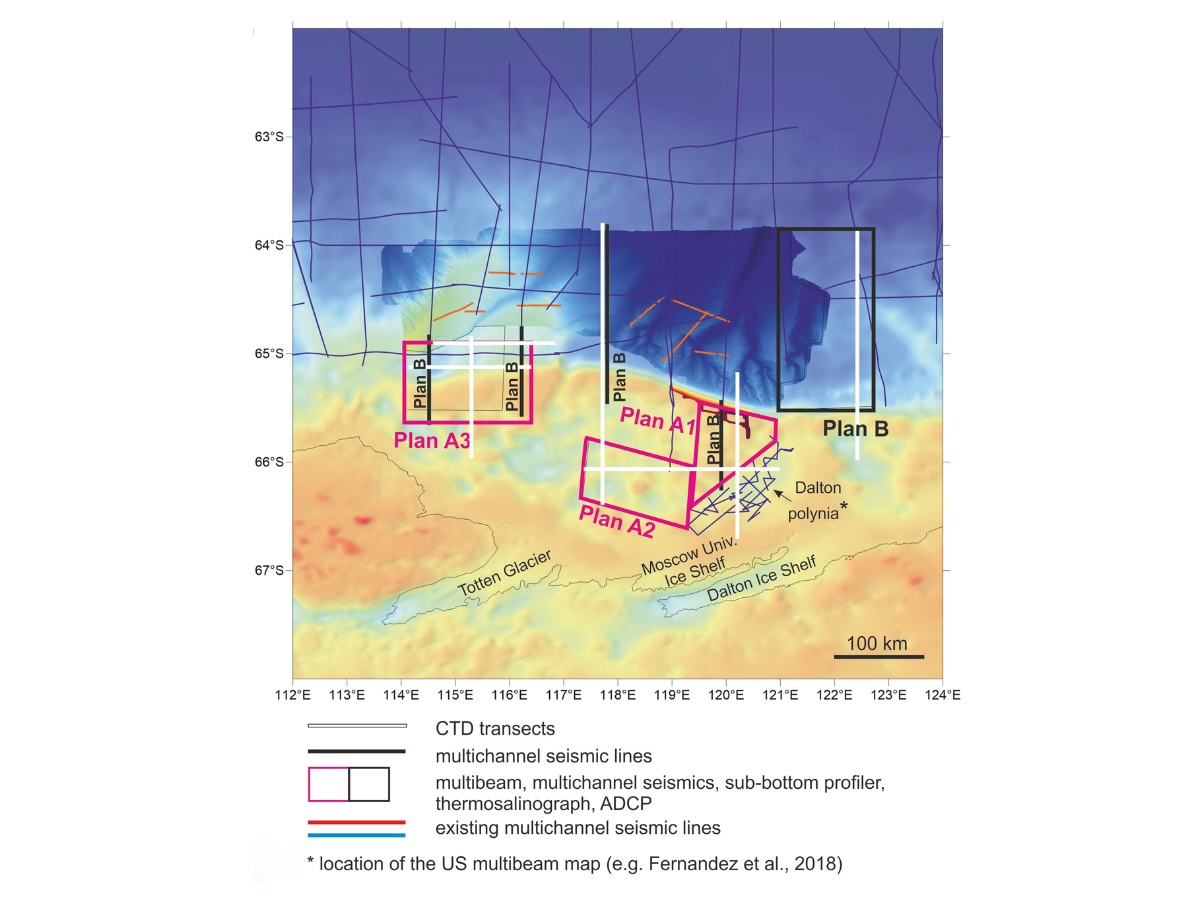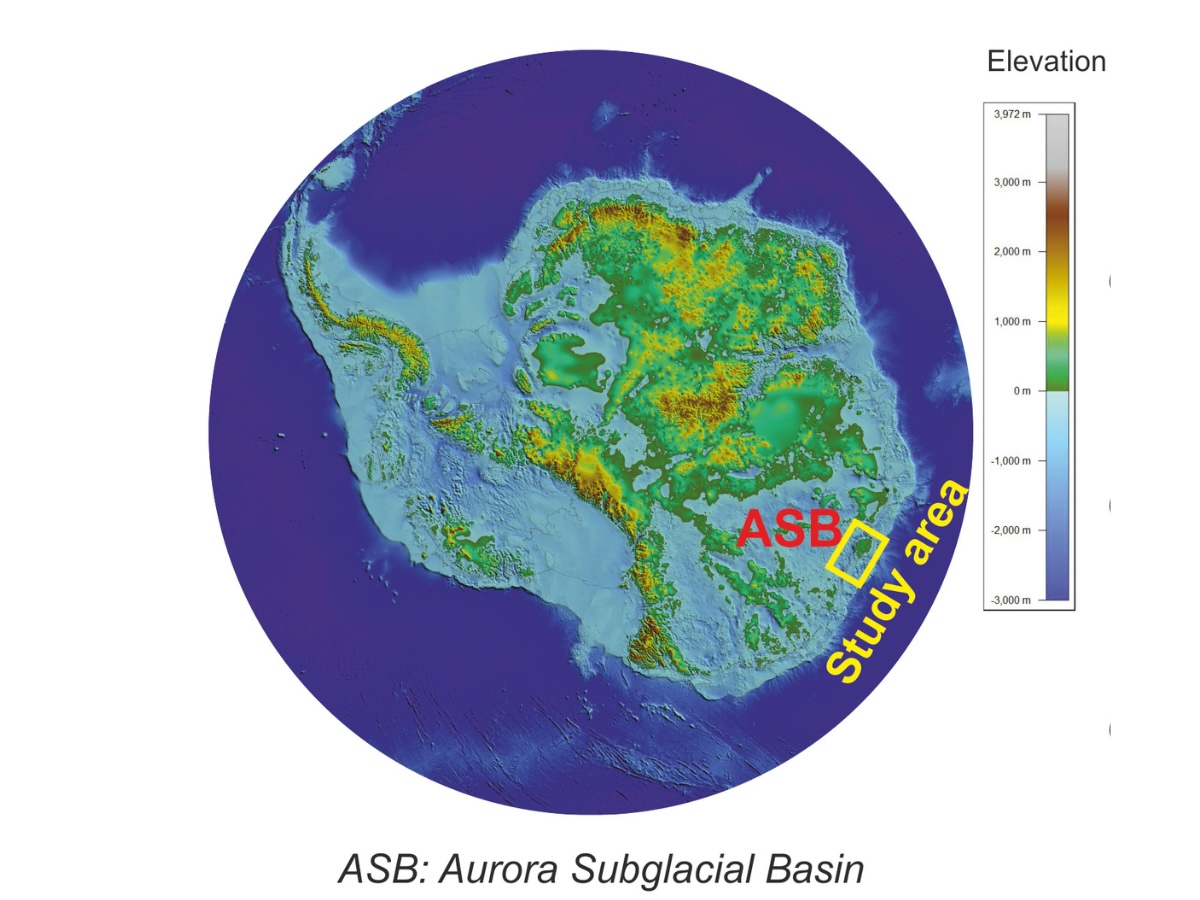
DIONE
Dynamic behavior Of the East ANtarctic Ice ShEet in the Sabrina Coast (East Antarctica)
The ice sheets’ response to climate forcing can be unveiled by examining how they have behaved in the past.
Major discoveries achieved in the last years allowed identifying key areas for understanding the complex interactions among the Antarctic cryosphere, hydrosphere and lithosphere in Antarctica. One of these key areas is the continental margin off the Sabrina Coast (ca. 114°-124°E; see figure), where the East Antarctic Ice Sheet (EAIS) is marine-terminating and grounded below sea level, which makes it sensitive to climate perturbations, so that the region is vulnerable to intense ice sheet melting leading to collapse. Hosting one of the Antarctica fastest melting glaciers, i.e., the Totten Glacier, which drains the largest East Antarctic subglacial basin, i.e. the Aurora Subglacial basin (see figure), the Sabrina Coast represents a crucial area to conduct research studies on how the EAIS behaved and evolved in the past, and for improving predictions of its behavior in a warming climate. These changes are enhanced by incursions of relatively warm modified Circumpolar Deep Water (mCDW) to the continental shelf and to the glacier grounding line (see figure).
The main aim of the DIONE project is to provide a comprehensive reconstruction of the environmental and climatic evolution of the Sabrina Coast since the Pliocene, when atmospheric CO2 concentrations were similar to the present (ca 420 ppm vs. ca 418 ppm today), the temperatures were 2-3° C higher, and the sea level stood about 20 m higher than today. To achieve this, we will perform a highly multidisciplinary survey to identify and characterize the glacier fluctuations in this area. We aim to collect morpho-bathymetric, geophysical, geological, biological and oceanographic data that will complement, and integrate the data collected during previous international surveys performed in this area.
In the study area, the Antarctic blue whale (Balaenoptera musculus intermedia), the fin whale (B. physalus) and the Antarctic minke whale (B. bonaerensis) are seasonally present between December and March besides other cetacean species. The International Union for the Conservation of Nature and Natural Resources (IUCN) classifies these baleen whales as endangered, vulnerable and near threatened, respectively. Considering the potential impact of anthropogenic noise on marine mammals, a feasibility study is being conducted for the first time from an Italian research vessel operating in the Southern Ocean, to investigate the behavioral response of baleen whales to seismic survey.
The highly multidisciplinary research activities of DIONE are carried out by five research units led by OGS, the University of Pisa, the University of Trieste, the Istituto Nazionale di Geofisica e Vulcanologia (INGV) and the Istituto Superiore per la Protezione e la Ricerca Ambientale (ISPRA), in collaboration with Australian National University, Centre for Environment Fisheries and Aquaculture Science (CEFAS, United Kingdom), Colgate University (USA), Geoscience Australia, Rutgers University (USA), School of Ocean and Earth Science, University of Southampton (United Kingdom), University of Tasmania and University of Tokio.


